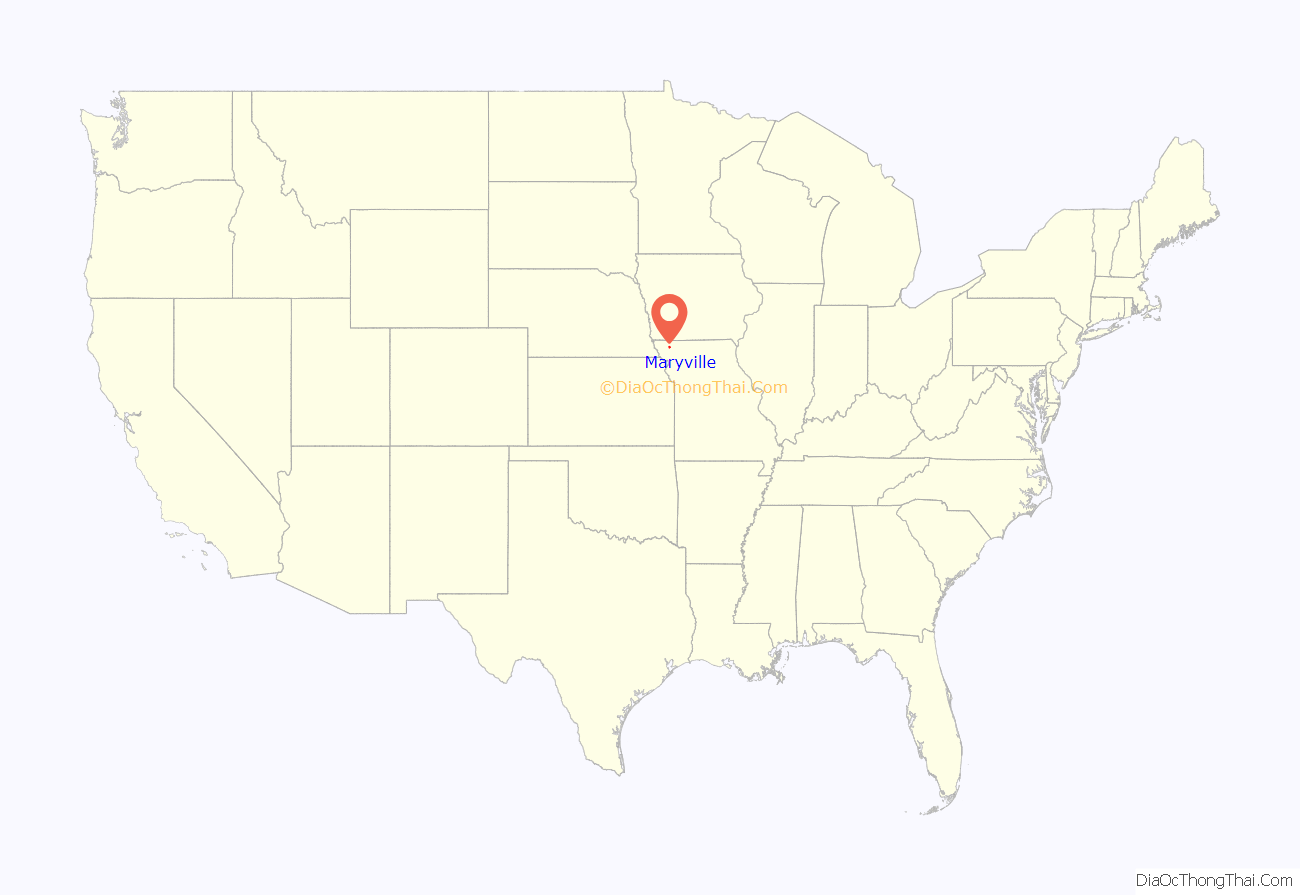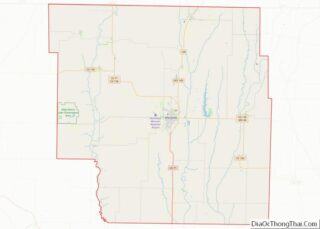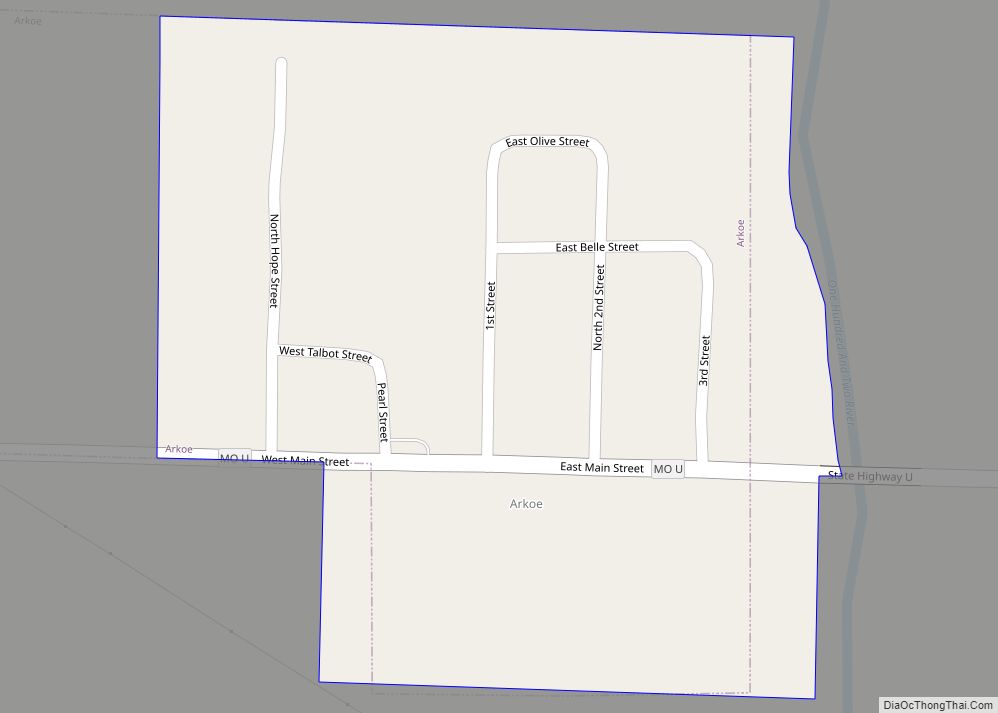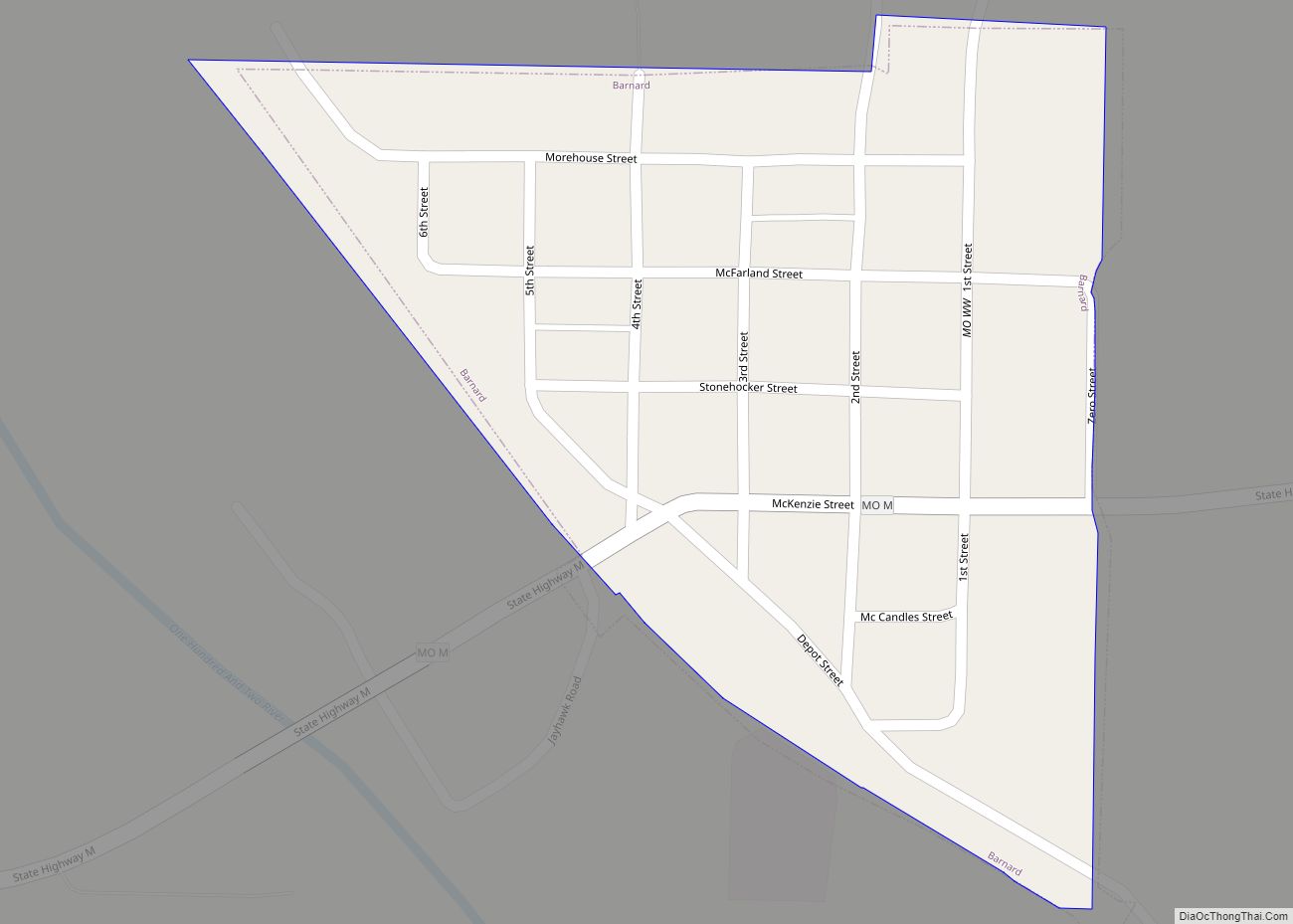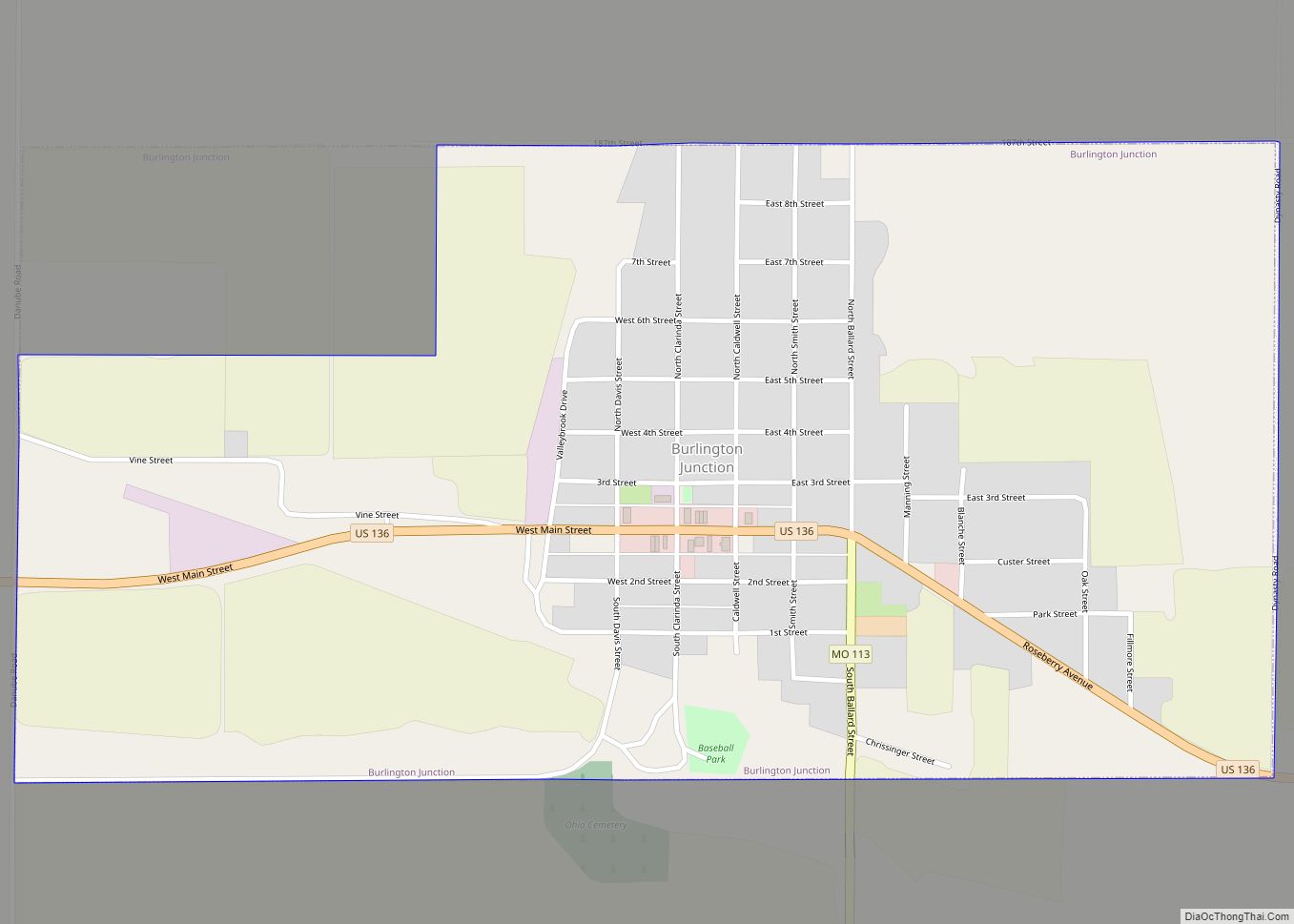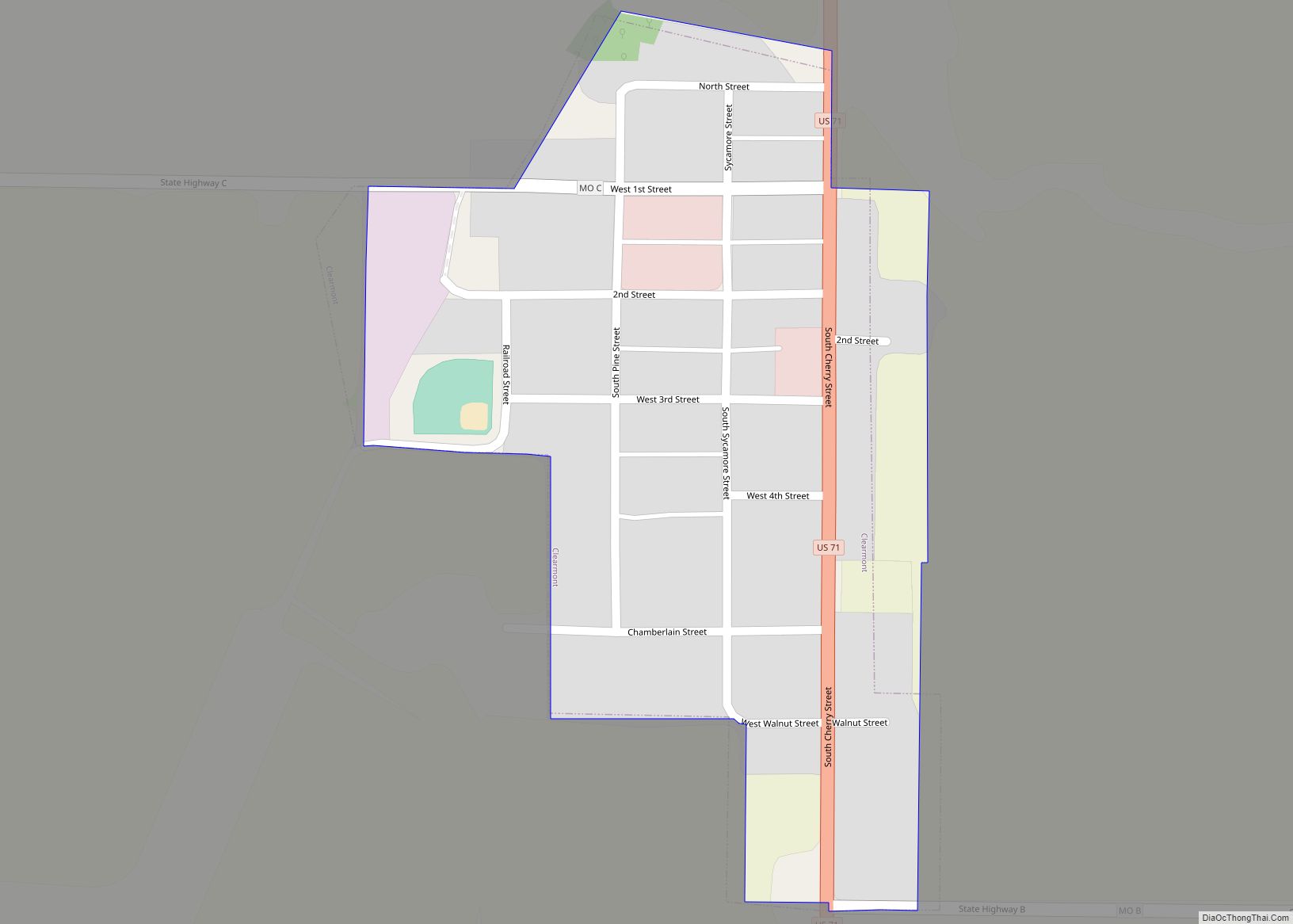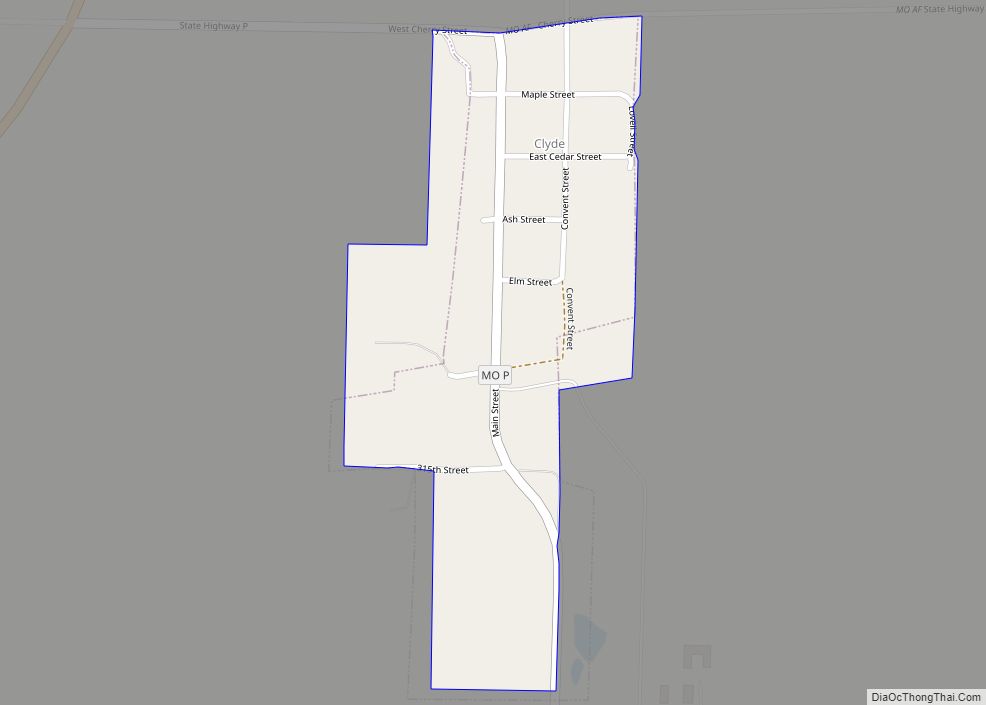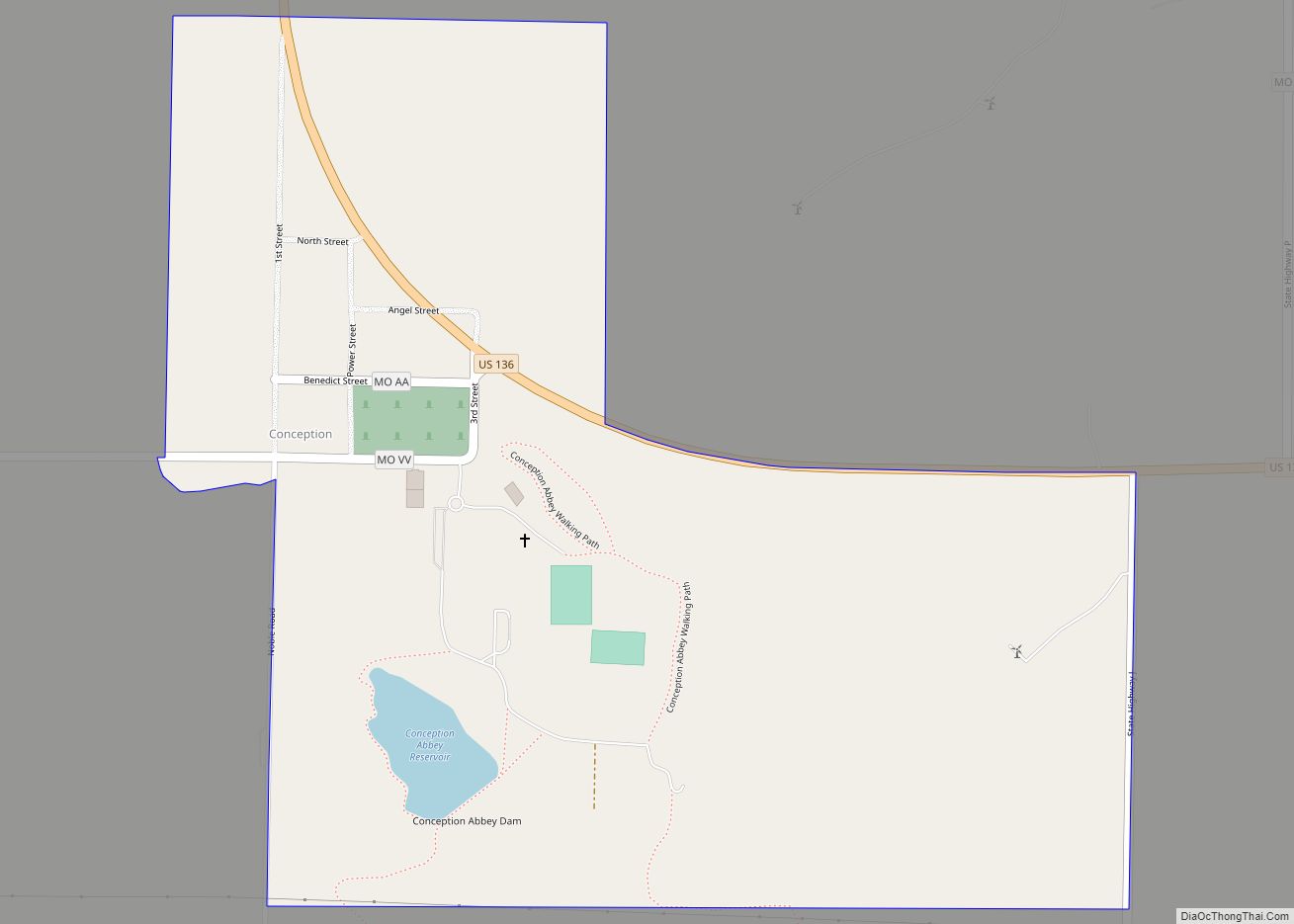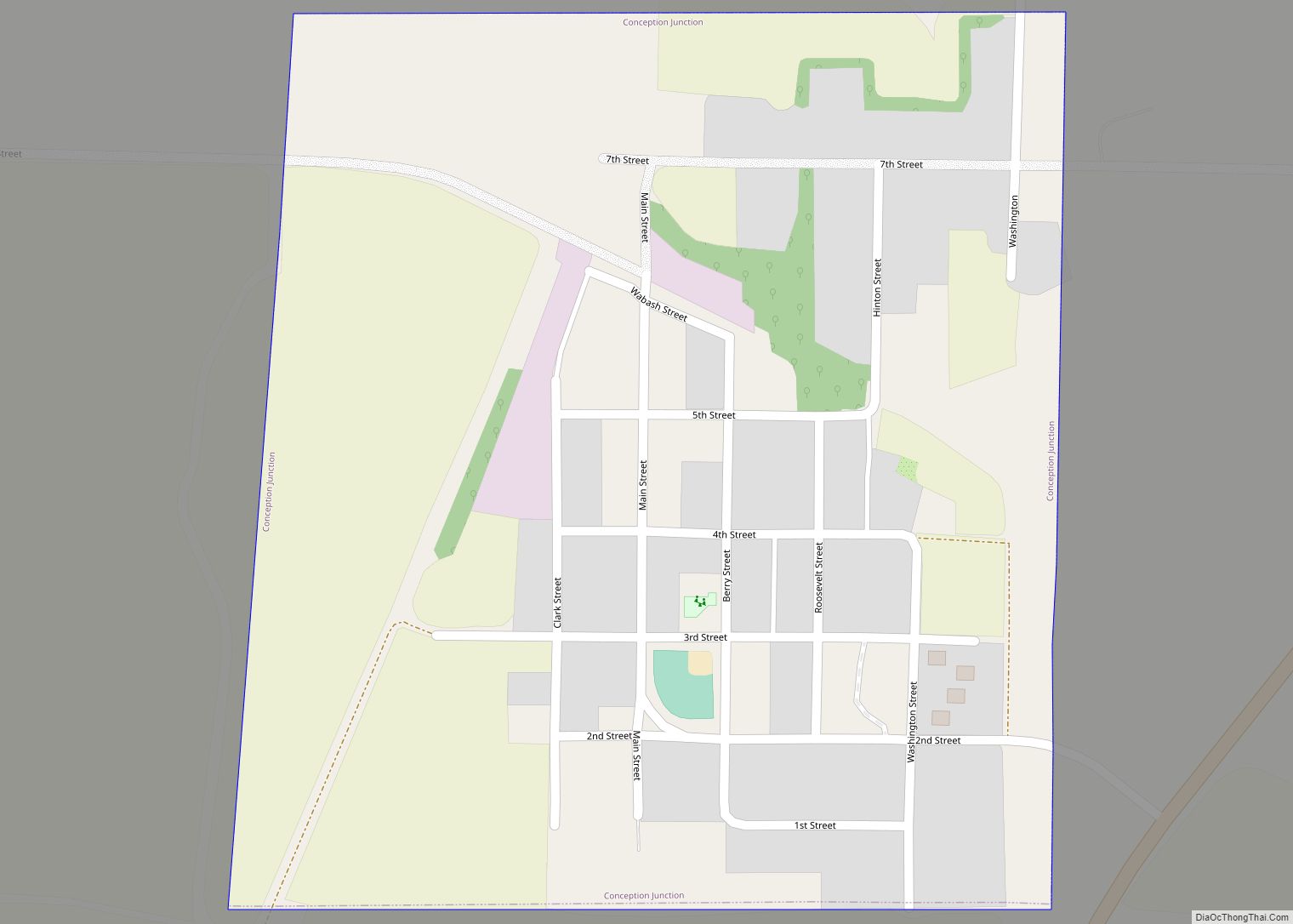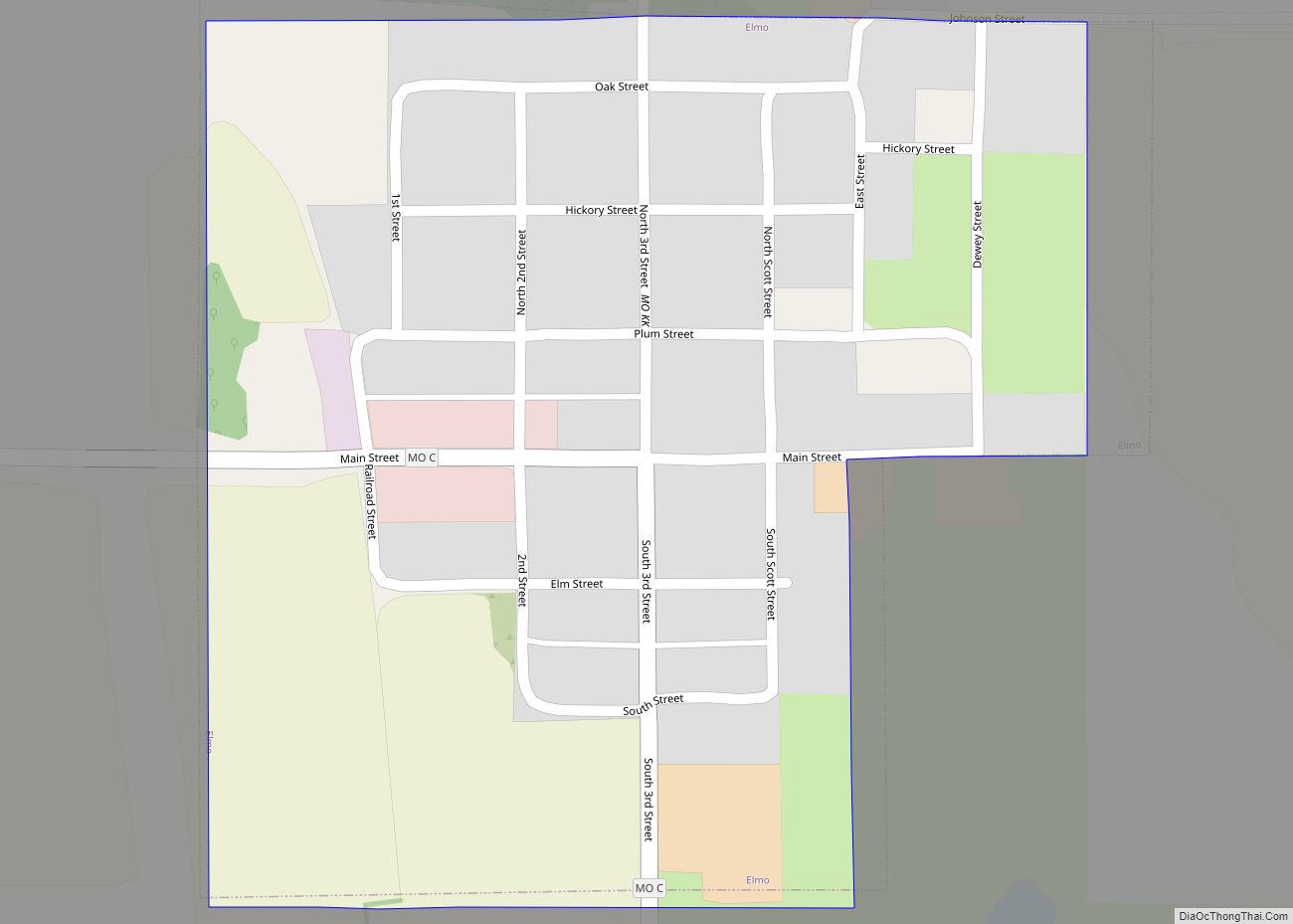Maryville is a city and county seat of Nodaway County, Missouri, United States. Located in the “Missouri Point” region, As of the 2020 census, the city population was 10,633. Maryville is home to Northwest Missouri State University and Northwest Technical School. Maryville is the second largest city (first is St. Joseph, Missouri) wholly within the boundaries of the 1836 Platte Purchase which expanded Missouri’s borders into former Indian Territory in northwest Missouri.
| Name: | Maryville city |
|---|---|
| LSAD Code: | 25 |
| LSAD Description: | city (suffix) |
| State: | Missouri |
| County: | Nodaway County |
| Elevation: | 1,106 ft (337 m) |
| Total Area: | 6.41 sq mi (16.59 km²) |
| Land Area: | 6.37 sq mi (16.51 km²) |
| Water Area: | 0.03 sq mi (0.08 km²) |
| Total Population: | 10,633 |
| Population Density: | 1,668.18/sq mi (644.06/km²) |
| ZIP code: | 64468 |
| Area code: | 660 |
| FIPS code: | 2946640 |
| GNISfeature ID: | 2395037 |
Online Interactive Map
Click on ![]() to view map in "full screen" mode.
to view map in "full screen" mode.
Maryville location map. Where is Maryville city?
History
Maryville was platted on September 1, 1845.
Maryville’s name originates from the town’s first postmaster, Amos Graham. Graham was one of the original settlers of what would later become downtown Maryville, and the city was named after his wife, Mary. In addition to his above historical role, Graham was also one of the original Nodaway County Commissioners and served as the first county clerk when the county was formally organized in 1845. Maryville, which is near the geographic center of Nodaway County, was also named the county seat in the same year.
The first house in Maryville was built by Jack (John) Saunders, who was a large slave owner. The first courthouse was built in 1846. Formerly, county government affairs would be held in the home of an early settler, I.N. Prather. An updated courthouse was constructed in 1853, the second of only three in the city’s history. The current courthouse was built in 1881 with a design by Edmond Jacques Eckel and George R. Mann. Mann would later go on to design the Arkansas State Capitol. The courthouse is currently listed on the National Register of Historic Places and is adorned with a sculpture of a pineapple, the sign of welcome. The original court complex included one of the country’s only rotary jails. The jail was torn down in 1984 and replaced with a new structure on the same site.
The city was incorporated in 1856, annulled in 1857, reincorporated in 1859, annulled during the Civil War, reincorporated in 1869, disincoporated again in 1869 and finally formally incorporated on July 19, 1869, when the Kansas City, St. Joseph, and Council Bluffs Railroad (later acquired by the Chicago, Burlington and Quincy Railroad) arrived. The Wabash Railroad arrived in 1879. Both railroads no longer operate in the city and no railroads are operated anywhere in Nodaway County.
Missouri governors
In 1872 Albert P. Morehouse started the Nodaway Democrat, which became the Maryville Daily Forum. Morehouse would become governor. He lived in a house on Vine Street. Coincidentally, the house would later be occupied by Forrest C. Donnell before Donnell became a governor and U.S. Senator. The Forum was a chain-owned newspaper for nearly 100 years, and in 2013 it reverted to local ownership by the Cobb Group.
In 1889 the Maryville Methodist Seminary opened.
In 1891 Elizabeth Howell (who operated Howell Millinery in Maryville) contributed to the development of the Lazy Susan when she received an American patent for “certain new and useful Improvements in Self-Waiting Tables”. Howell’s device ran more smoothly and did not permit crumbs to fall into the space between the Lazy Susan and the table.
In 1894 Mary Augustine Giesen moved to Maryville and opened St. Francis Hospital.
Kentucky Derby connections
In 1901, the horse Elwood was foaled at Faustiana Farms, owned by Mrs. J.B. Prather, on the west side of Maryville. It won the Kentucky Derby in 1904 and was the first Derby winner to be bred by a woman. Faustiana was located where the Maryville Country Club is today. Mrs. Prather also has connections with the second horse to be owned and bred by a woman to win the Derby – Black Gold in 1924, which was the great grandchild of Faustus, the namesake of the Faustiana farm. Elwood and Black Gold are two of 10 Kentucky Derby winners with Nodaway County connections. Trainer Ben A. Jones won the Derby in 1938, 1941, 1944, 1948, 1949 and 1952. His son Jimmy Jones won in 1957 and 1958. They operated a horse farm at Parnell, Missouri until their deaths (although their racing fame is tied to Calumet Farm in Kentucky). Memorabilia from their horse racing days are St. Francis Hospital and at the Nodaway County Historical Society Museum.
Northwest Missouri State University founding
In 1905, Maryville won a contest to get the Fifth District Normal School, which would become Northwest Missouri State University. It offered $58,672 and 86 acres (35 ha), including the Methodist Seminary, to the state. The college was on the northwest corner of the city, nearly adjoining the Wabash train station. The most significant structure on the land transferred to the state was the Thomas Gaunt mansion, which is also on the National Register and is the college President’s residence. Gaunt owned an extensive nursery on his property, which was on a birch-lined street and is now the Missouri Arboretum. The most recognizable building on the campus today is the Administration Building, designed by John H. Felt. It is on the National Register and resembles Brookings Hall at Washington University in St. Louis, which was the Administration Building of the 1904 World’s Fair in St. Louis.
1931 lynching
In 1931, a notorious lynching occurred in Maryville when a mob of 2,000 to 4,000 people burned alive African American Raymond Gunn, who was awaiting trial, charged with the attempted rape and killing of a 20-year-old white school teacher. One woman held her young girl up so the girl could get a better view of the naked man afire. A Maryville policeman directed traffic as Gunn burned. After the fire was out, hundreds of the mob poked around in his ashes for souvenirs, with the pieces of his charred remains and teeth and bone fragments divided among them. While the Sheriff said he knew who had committed the killing, nobody was ever charged.
The lynching attracted national attention and was frequently invoked in the unsuccessful campaign to pass the Costigan-Wagner Bill, which would have made it a federal crime for law enforcement officials to refuse to try to prevent a lynching.
Herbert Hoover connections
In 1928 there was speculation that Maryville would become the “Western White House” for Herbert Hoover when it was discovered that he owned a farm 15 miles south of town. The farm was actually only 80 acres and he had acquired it after holding the mortgage for his Stanford University Class of 1895 roommate Samuel Wilson Collins. It was Iowa-native Hoover’s only farm and Hoover visited it in 1933 after leaving office. He was accompanied by his former Secretary of Agriculture Arthur M. Hyde. Hoover’s vice president Charles Curtis visited Maryville on October 4, 1932 where spoke at the Administration Building after being rained out of a planned appearance at the Courthouse.
Harry Truman connections
Harry S. Truman (along with Bess and Margaret Truman) made the last of several visits to Maryville on August 3, 1962, when he dedicated the current post office. Truman had extensive ties to Maryville. During World War I Truman was a member of the 129th Field Artillery Regiment in the Missouri National Guard, which is headquartered in Maryville. Truman commanded Battery D in the war of the 129th. The 129th official motto is “Truman’s Own” because of the affiliation. During the Meuse-Argonne Offensive during World War I in 1918, Truman prophetically told his troops, “Right now, I’m where I want to be – in command of this battery. I’d rather be here than president of the United States.” Among the original 129th soldiers was Edward V. Condon (1893–1974) who later operated the Condon Corner Drug Store across the street on the Square after the war. Truman dedicated the 129th’s armory on the northwest side of Bearcat Stadium on the college campus on February 20, 1955.
The 1955 armory was repurposed as the Jon T. Rickman Electronic Campus Support Center in 2003, when a new armory was built further west of the campus near the Maryville Country Club, which is the site of the original Faustiana Farm complex. Many of Maryville’s most active citizens have ties to the 129th, including Leigh Wilson (1881–1978), who rose to rank of Brigadier General. Wilson, who operated the Wilson Motel in Maryville, as well as the Hitching Post restaurant, was one of the biggest proponents for broadening Maryville’s economic base away from the college.
Truman’s sister Mary Jane Truman, who was active in the Order of Eastern Star, visited Maryville and Nodaway County several times for Eastern Star events before, during and after the Truman presidency.
In 1969, Maryville received an All-America City Award.
In 1987, the Palms Bar in town began sponsoring the “World’s Shortest Saint Patrick’s Day Parade.” The parades, which are less than a block long, have been getting shorter each year as other towns compete for the title. One of the mainstays of events has been a garbage truck driving down the street at the beginning, pouring out buckets of green water as a Maryville homage to the dyeing of the Chicago River green. In 2015, the parade moved from being a block off the square to actually being on the square after it became sponsored by Burny’s Sports Bar.
In 1994, Mozingo Lake opened east of Maryville. Its Mozingo Lake Golf Course has courses designed by Donald Sechrest and Tom Watson (which opened in 2016).
In 1996, the Maryville Treatment Center, a minimum security prison, opened in a renovated Franciscan Sisters of Mary Motherhouse which had been built in 1947 and has a landmark yellow steeple on the bluffs above the One Hundred and Two River on the east side of Maryville.
American football
Maryville became a football powerhouse in 1994 when Mel Tjeerdsma became coach of Northwest Missouri State Bearcats football. The Bearcats played in the 1998, 1999, 2005, 2006, 2007, 2008, 2009, 2013, 2015 and 2016 NCAA Division II Football Championship games, winning in 1998, 1999, 2009, 2013, 2015 and 2016. The basketball team won national titles in the NCAA Division II Basketball Championship in 2017, 2019 and 2021. In addition, the Maryville High School football team appeared in 1996, 2008, 2009, 2012, 2013, 2016 and 2017 (winning in 2009, 2012, 2013 and 2017, in addition to an earlier championship in 1982) state championship games. The history of championship victories have earned the town nickname of “Title Town.” The high school has the unique mascot of “Spoofhounds.” Both schools have green and white for their school colors. Adam Dorrel, a Maryville High graduate, succeeded his former boss Tjeerdsma when he retired as coach in 2010 and kept up the tradition winning the national titles in 2013, 2015 and 2016.
Minor league baseball
Maryville was home to the Maryville Comets, a minor league baseball team, in 1910 and 1911. The Comets played as members of the Class D level Missouri-Iowa-Nebraska-Kansas League.
2012 sexual assault
A controversial case arose in 2012 when a boy, 17 at the time of the incident, was arrested for the rape and sexual assault of a 14-year-old girl. A 15-year-old boy was accused of doing the same to the girl’s 13-year-old friend, and a third boy admitted to recording the first boy’s alleged assault on a cellphone. A significant controversy arose in 2013 when the county prosecutor dropped felony and misdemeanor charges against the first boy, who was related to an influential former state representative Rex Barnett, despite the Sheriff’s office reporting absolute confidence that the evidence they had gathered being sufficient for a prosecution, including the boy’s confession recorded on video. The Nodaway County prosecutor dropped the felony sexual exploitation charge against the third boy.
Maryville residents relentlessly bullied and harassed the victim, who first attempted suicide when she was 16 years old. The family was forced to leave town and their house burned down in mysterious circumstances. Outrage in online communities soon followed when the story surrounding this case was revisited in October 2013. National news media described the situation as “horrifying” and “a nightmare”. Michael Schaffer, reporting on the incident for The New Republic, described Maryville as a “lawless hellhole”. In 2014, a special prosecutor was put in charge to reinvestigate the case. The first boy pleaded guilty to misdemeanor second-degree endangerment of the welfare of a child for leaving her outside her house, and was sentenced by Missouri Circuit Judge Glen Dietrich to four months in jail that were suspended in favor of two years probation. The boy was sentenced in juvenile court for the assault. The incident is featured in the 2016 Netflix documentary Audrie & Daisy.
The victim, Daisy Coleman, died by suicide on August 4, 2020. Coleman’s mother, Melinda Coleman, died by suicide about four months later, on December 6.
Maryville Road Map
Maryville city Satellite Map
Geography
Maryville is located approximately 100 miles (160 km) north of the Kansas City metropolitan area.
According to the United States Census Bureau, the city has a total area of 5.80 square miles (15.02 km), of which 5.77 square miles (14.94 km) is land and 0.03 square miles (0.08 km) is water.
The One Hundred and Two River, located on the eastern side of the city, is the primary source of power and water for the city.
See also
Map of Missouri State and its subdivision:- Adair
- Andrew
- Atchison
- Audrain
- Barry
- Barton
- Bates
- Benton
- Bollinger
- Boone
- Buchanan
- Butler
- Caldwell
- Callaway
- Camden
- Cape Girardeau
- Carroll
- Carter
- Cass
- Cedar
- Chariton
- Christian
- Clark
- Clay
- Clinton
- Cole
- Cooper
- Crawford
- Dade
- Dallas
- Daviess
- De Kalb
- Dent
- Douglas
- Dunklin
- Franklin
- Gasconade
- Gentry
- Greene
- Grundy
- Harrison
- Henry
- Hickory
- Holt
- Howard
- Howell
- Iron
- Jackson
- Jasper
- Jefferson
- Johnson
- Knox
- Laclede
- Lafayette
- Lawrence
- Lewis
- Lincoln
- Linn
- Livingston
- Macon
- Madison
- Maries
- Marion
- McDonald
- Mercer
- Miller
- Mississippi
- Moniteau
- Monroe
- Montgomery
- Morgan
- New Madrid
- Newton
- Nodaway
- Oregon
- Osage
- Ozark
- Pemiscot
- Perry
- Pettis
- Phelps
- Pike
- Platte
- Polk
- Pulaski
- Putnam
- Ralls
- Randolph
- Ray
- Reynolds
- Ripley
- Saint Charles
- Saint Clair
- Saint Francois
- Saint Louis
- Sainte Genevieve
- Saline
- Schuyler
- Scotland
- Scott
- Shannon
- Shelby
- Stoddard
- Stone
- Sullivan
- Taney
- Texas
- Vernon
- Warren
- Washington
- Wayne
- Webster
- Worth
- Wright
- Alabama
- Alaska
- Arizona
- Arkansas
- California
- Colorado
- Connecticut
- Delaware
- District of Columbia
- Florida
- Georgia
- Hawaii
- Idaho
- Illinois
- Indiana
- Iowa
- Kansas
- Kentucky
- Louisiana
- Maine
- Maryland
- Massachusetts
- Michigan
- Minnesota
- Mississippi
- Missouri
- Montana
- Nebraska
- Nevada
- New Hampshire
- New Jersey
- New Mexico
- New York
- North Carolina
- North Dakota
- Ohio
- Oklahoma
- Oregon
- Pennsylvania
- Rhode Island
- South Carolina
- South Dakota
- Tennessee
- Texas
- Utah
- Vermont
- Virginia
- Washington
- West Virginia
- Wisconsin
- Wyoming
